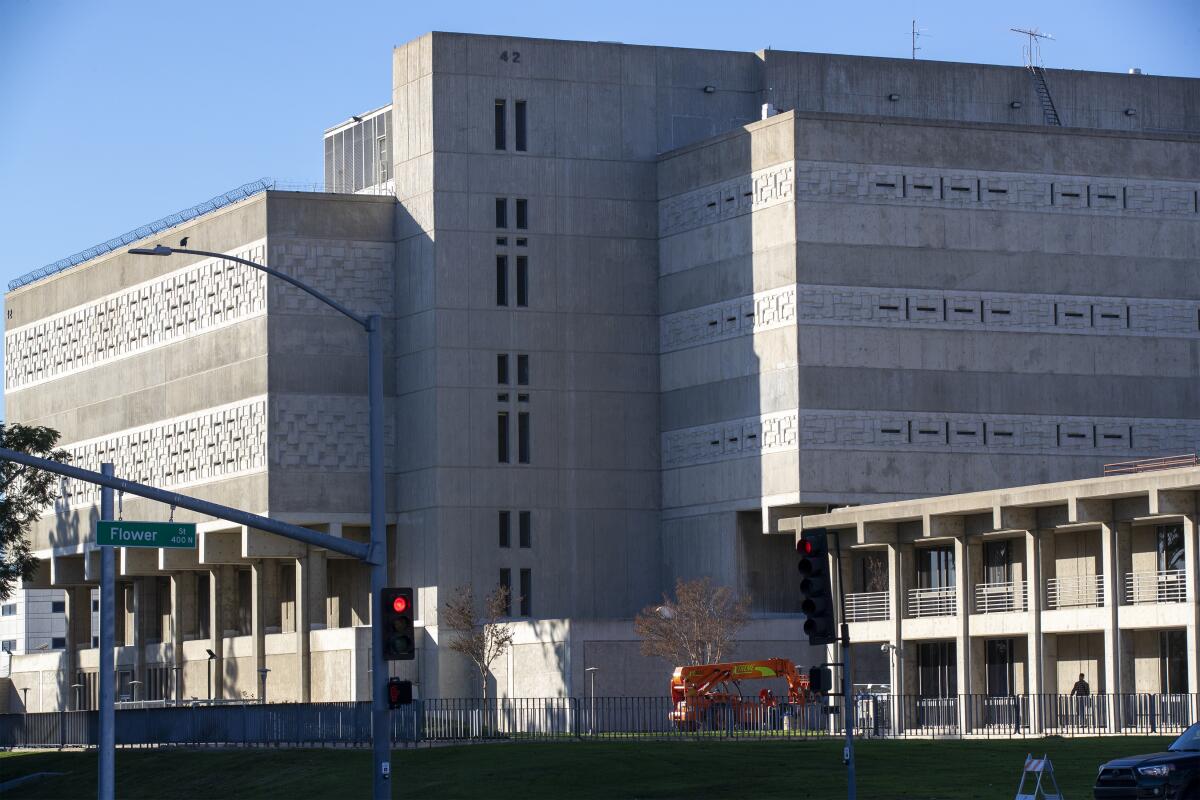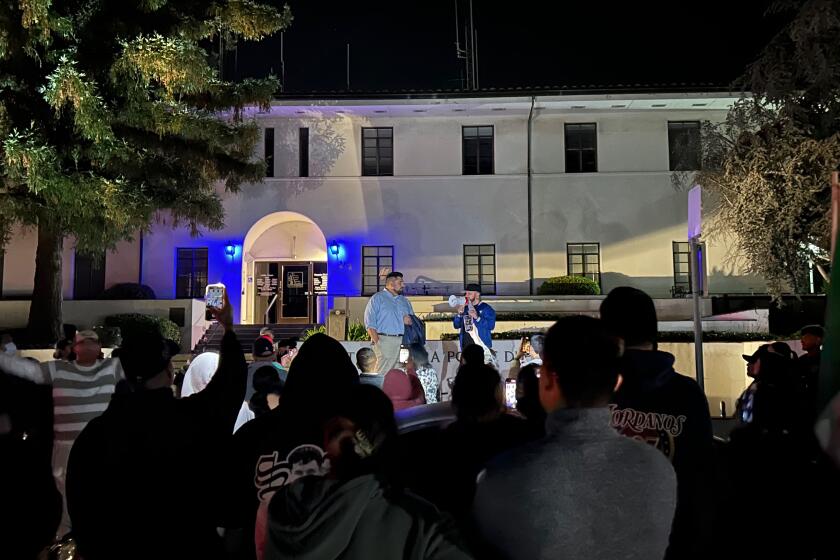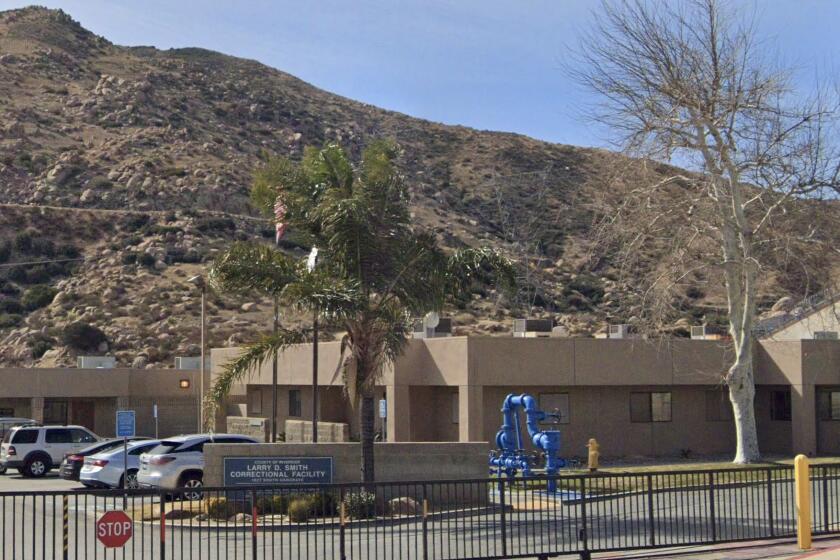The use of jailhouse snitches in Orange County bungled at least 57 criminal cases, public defender says

- Share via
At least 57 felony trials, most of them homicide cases, were botched by the mishandling of jailhouse snitches in Orange County, according to a new analysis by the public defender’s office, suggesting the scandal that rocked the county’s justice system nine years ago was larger than previously believed.
Defense attorneys said last year they believe 21 defendants accused of murder and other serious felonies were affected by the scandal and had their convictions vacated, sentences reduced or new trials ordered. It was around that time the U.S. Department of Justice’s civil rights division found that the Orange County Sheriff’s Department and district attorney’s office systematically violated the rights of defendants from 2007 to 2016 by using informants to elicit confessions.
Now, officials say the number of known cases involving such snitches is more than twice what was previously known, and the public defender who first uncovered it believes it is now the largest documented scandal involving the illegal mishandling of informants.
“We knew already it was the longest-running and most extensive informant scandal in U.S. history,” said Public Defender Scott Sanders, who first raised the allegations in 2014. “It was far larger than we realized.”
Officials at the Sheriff’s Department did not respond to a request for comment. In a statement, Orange County Dist. Atty. Todd Spitzer, who was elected to the office after the scandal came to light during his predecessor’s tenure, said his office has cooperated with the investigations into the use of informants, and cooperated with the Department of Justice’s Civil Rights Division.
“As part of our continued cooperation with the DOJ, we have a team of prosecutors tasked with reviewing each one of these cases and ensuring all of our discovery obligations have been met, and to take any further remedial action, if necessary,” the statement read. “In addition, the Orange County District Attorney’s Office has expanded the role of our Conviction Integrity Unit by adopting a policy to review any wrongful conviction claim.”
Santa Barbara police have asked the district attorney to consider hate crime and other charges against a woman after her comments to a worker in a viral video.
Nearly a decade after the scandal was unearthed, Sanders said there are still new cases being found in which the use of informants was hidden in court.
According to the analysis, 35 of the 57 cases affected by the illicit use of informants involved homicide charges. Seven of those defendants were facing multiple murder charges.
In all of the 57 cases, the defendants received significantly lower sentences than they were initially facing. In most of the trials, the charges were significantly reduced or outright dropped when the illicit use of snitches in the case came to light.
In at least 14 murder cases, the defendants were initially facing homicide charges and potential sentences of up to life in prison if convicted. Instead, 10 of the defendants had the charges reduced — often to manslaughter — and were sentenced to less than 10 years in state prison.
Two of the defendants had all the charges dismissed, and another was found not guilty after the informant was not called to testify. In another case, a new trial has been ordered.
Many of the murder trials included special circumstances that could have meant longer sentences, Sanders said. But many of those special circumstances would not have been included in the case if it hadn’t been for the work of informants.
In some of the trials the charges were dropped or reduced when prosecutors decided not to bring the informant to testify.
In seven of the cases, charges were reduced or dropped after Special Handling Deputy Seth Tunstall, who handled several informants in the county jail at the time, refused to testify.
Jorge Alberto Oceguera-Rocha, 25, is arrested, suspected of selling or sharing narcotics within the Riverside jail where he works, sources say.
The scandal also upended law enforcement and political careers as details were revealed.
The cases were initially investigated under then-Dist. Atty. Tony Rackauckas, who dismissed the allegations in 2017 as a “media witch hunt.”
In a successful 2018 campaign to unseat Rackauckas, then-candidate Spitzer made the snitch scandal a central part of his attacks on Rackauckas, calling for reform in the prosecutor’s office.
Sandra Hutchens, Orange County sheriff at the time, declined to run for reelection.
Spitzer’s office published a report in 2020 of an internal investigation into the scandal and his predecessor’s actions, and concluded that it was unclear if prosecutors had done anything wrong.
The use of informants in itself is not illegal, but sheriff‘s officials and prosecutors were accused of using snitches after inmates had been charged — a violation of the 6th Amendment. Law enforcement officials were also accused of hiding the fact that informants were used during trial or what benefits the informants received in exchange for their cooperation with law enforcement.
“Too many defendants did not know what individuals were doing in their cases, which was improper,” Sanders said

At times, the Sheriff’s Department housed informants in the county jail near suspects, looking to have them elicit confessions.
The scandal came to light in 2014 during the trial of Scott Dekraai, who killed his ex-wife and seven others during a mass shooting in 2011. A known informant was placed next to Dekraai in the county jail, and Sanders’ motions trying to find out more about the informant revealed a systematic, illegal use of snitches in a slew of cases.
According to the analysis, informants received between $400 to $1,500 in some cases. Some informants, however, were repeatedly used by law enforcement and received leniency in their own cases.
Two of them received hundreds of thousands of dollars in payments, inspiring legislation to cap the amount of payments that informants can receive.
Sanders said an accounting of the cases is important to document the full scope and impact of the scandal.
“You look at the numbers and it’s astounding,” he said. “This is the greatest informant scandal that has been ever documented.”
More to Read
Sign up for Essential California
The most important California stories and recommendations in your inbox every morning.
You may occasionally receive promotional content from the Los Angeles Times.













